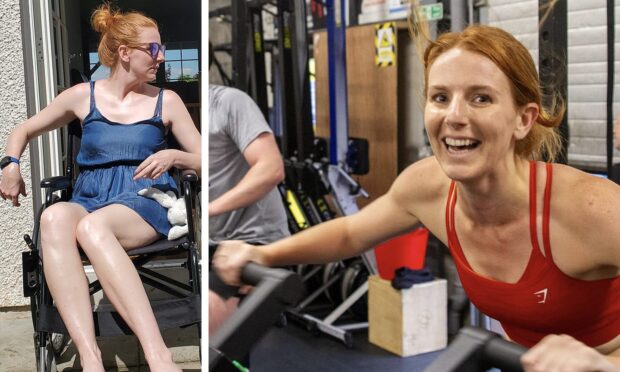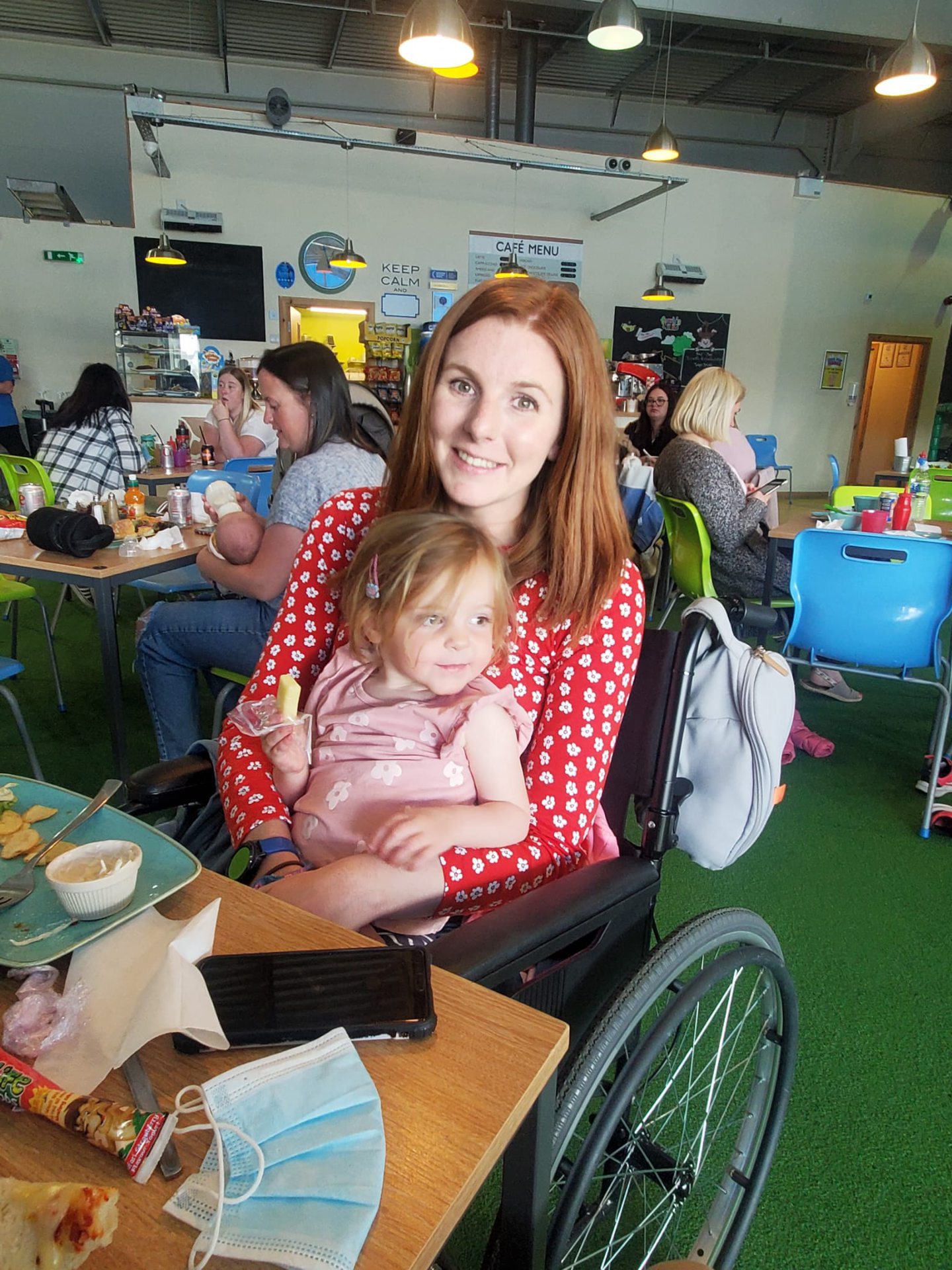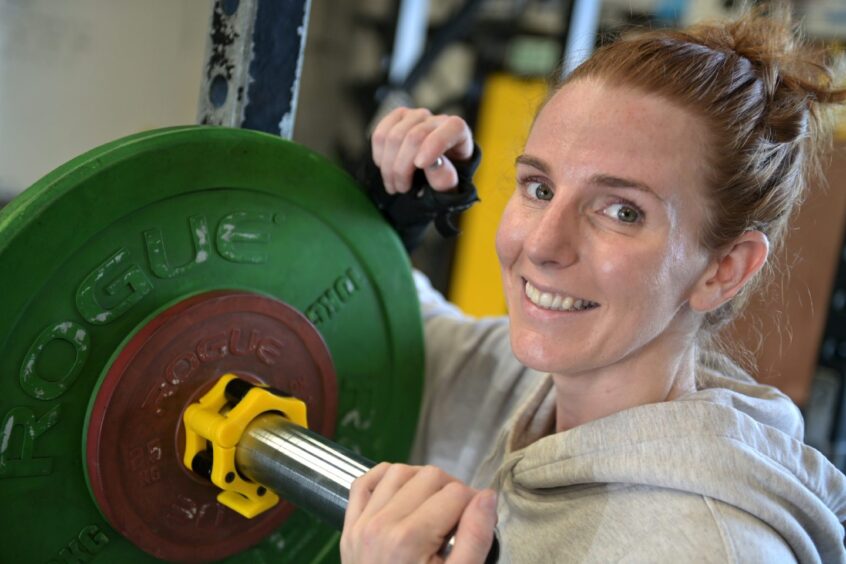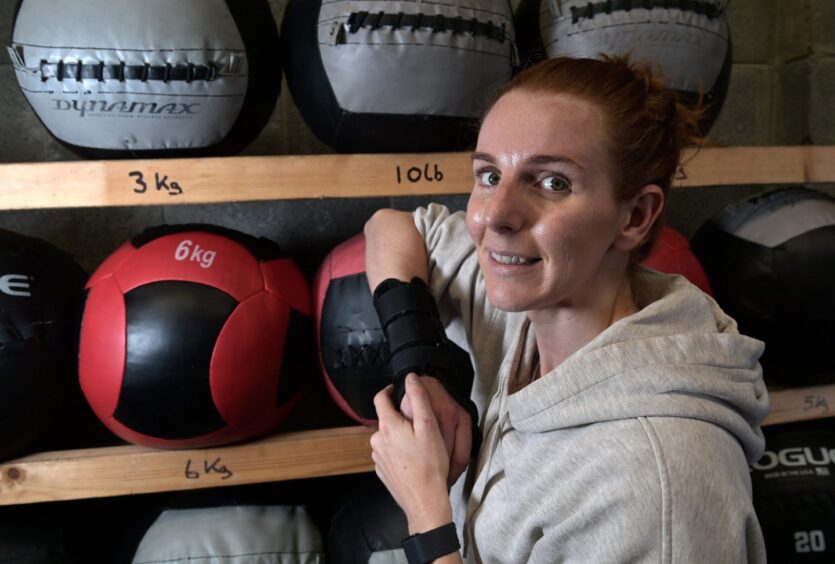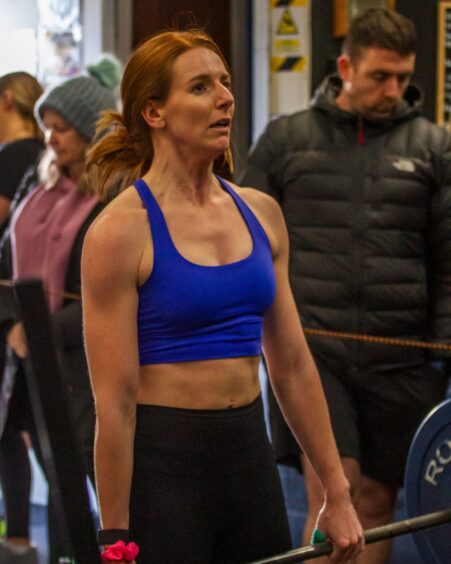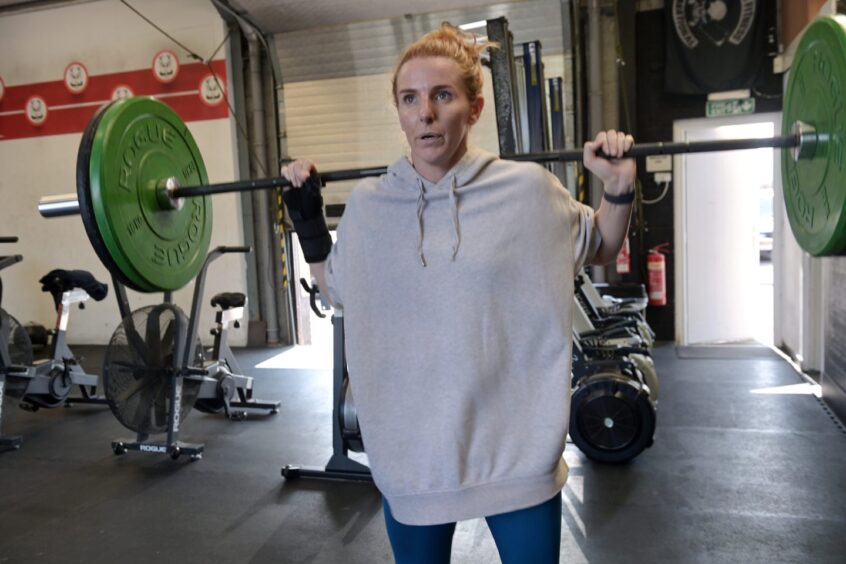A few months ago, Rachel Hives was in a wheelchair, brought low by yet another bout of extreme pain, seizures and fatigue caused by her rare neurological condition.
But in September, the 34-year-old from Drumnadrochit will fly to Texas to take part in the finals of the CrossFit Games as one of the elite ‘adaptive’ athletes competing to be crowned — so the CrossFit mantra goes — the ‘Fittest Person on Earth’.
It is the latest chapter in the mum-of-two’s incredible story that started when, still in her teens, she was diagnosed with functional neurological disorder (FND).
It features a chance introduction to CrossFit that resulted in a near miraculous recovery of her wasted muscles and a continuing love affair with the sport she says transformed her life.
And it includes the promise she made to herself on behalf of her two children, Hamish, 7, and Isla, 5, who will be cheering her on in Texas from across the Atlantic.
“Don’t get me wrong,” Rachel says. “There’s days when you think you just can’t do this anymore.
“But I don’t want my kids growing up thinking, oh, she just let this happen to her.
“I want my kids to see that bad things do happen. But if you do work hard enough, you will be able to make a bad situation a lot better.”
How Rachel discovered she had FND
Rachel was 19 when she woke up one morning completely paralysed down her left side.
“It looked like I’d had a stroke,” she recalls of the moment 15 years ago.
She was rushed to Aberdeen Royal Infirmary, staying there for a month while doctors tried to work out what was wrong with her.
It was more a process of elimination — Parkinson’s, multiple sclerosis and cancer were all ruled out.
Eventually, she was told her condition was just something she’d have to get used to it.
What is FND and what are its symptoms?
That advice is common with FND, which affects up to 100,000 people in the UK.
Doctors know that the symptoms — which vary from person to person — are caused by brain having problems sending signals to the rest of the body.
But how and why that is happening is not clear. Some evidence suggests it could be down to stress, or even the brain attempting to get rid of a painful sensation.
How long symptoms last is also unknown. So when Rachel left ARI, she didn’t know if the paralysis she still had down her left side would be with her for the rest of her life.
She was also very tired, and the month in hospital had left her with little strength.
Her response was one she would repeat over and and over in her battle with FND — to conquer her weakness through exercise.
“I would go with my mum to the swimming pool, and she would literally throw me in,” she says. “Then I would drag myself up and down the pool, pulling myself along with the right side that worked.”
She adds: “I was just adamant; I can’t be stuck like this.”
What happens during an FND bout?
Through her hard work, Rachel got better. The attacks came and went, but knowing they would eventually pass made dealing with them easier.
Still, Rachel never knew what was around the corner.
The first sign of an attack was always tiredness, and it was all she could do to get out of bed.
Next come seizures and spasms, though mostly at night, especially if she has been busy during the day. She has a bath, lays down to relax in bed and then — wham!
“At night time everything just seems to happen,” she says. “It isn’t lovely at all.”
What Rachel discovered at the 57 North CrossFit gym in Inverness
Rachel was at a low point when she discovered CrossFit. A friend had mentioned it so she visited Inverness’ CrossFit gym 57 North.
That day was the first she’d been able to walk by herself for some time — she had been using a wheelchair to get around.
But she was immediately hooked by what she found.
CrossFit is not for the faint-hearted.
A pain-inducing hybrid of three different disciplines — cardio, gymnastics and Olympic style weightlifting – it is also a sport, with participants competing to do the CrossFit ‘wod’, or Workout of the Day, in the shortest time or with the heaviest weight.
Theses wods — which also form the basis of the CrossFit Games — can be anything from a few minutes to half an hour long, and typically athletes don’t know what exercises they include until the session starts.
But they all tend to be grueling, exhausting and painful, testing endurance, strength and flexibility often at the same time.
How CrossFit helped Rachel get her children in the bath
For Rachel, it was ideal. She figured she could build muscle and stamina during her good days so she could still function when the bad days came.
“I just have the mentality if I get as strong as I possibly can, then is it going to help for everything.
“If I am in a wheelchair, it normally takes a few days to get better, but now it’s not as long. And things like getting my kids in the bath, being able to put them to bed, being able to actually get out of my house, get into a shower — simple things that people totally take for granted and that I wasn’t able to do before.”
From CrossFit beginner to potential superstar
In the two years she has been doing CrossFit, Rachel has achieved a lot more than being able to put her children to bed. She has gone from CrossFit beginner to potential superstar.
The competition she is preparing for in San Antonio is the Adaptive CrossFit Finals, an extension of the regular CrossFit Games that hosts its male and female finals in Fort Worth, Texas, next week.
The adaptive version started in 2021 and includes 15 categories for athletes with both physical and neurological disabilities. The games wods are designed with the athletes’ disabilities in mind, but remain a grueling test of their skills and stamina.
Rachel is in the Female Standing Diagnosed category, which covers conditions such as FND and other neurological disorders that directly affect an athletes power output through, for example, chronic fatigue or pain.
It is a varied category, Rachel says. One of her competitors is a woman with Tourette’s, which has symptoms that can mimic FND’s.
None of the group of 10 finalists, however, will be holding back, especially not Rachel.
“If things are getting bad during a workout, I say to myself: You’ve done so much on your own with the help of nobody else,” she says. “I’m not going to let other people take that away.”
Fears of a last-minute FND attack cloud Texas preparations
Rachel’s training has ramped up in the past few weeks and she’s at the box – what CrossFitters call their gyms — for an hour or so every day at 7am and back again at 10am.
The single mum also fits in looking after Isla and Hamish and studying for a degree in Business and Management at UHI Inverness.
Meanwhile, she’s preparing for the heat of the Texas summer with warm weather training in hoodies and thermals — a necessity, she says, for “a ginger person from Drumnadrochit”.
Like all top athletes, she’s worried about a last-minute injury that could scupper her preparations, though for Rachel the injury could be in the form of another FND attack.
Her last one, near the beginning of this year, put her back in a wheelchair. It was yet another setback she overcame through determination and steel grit.
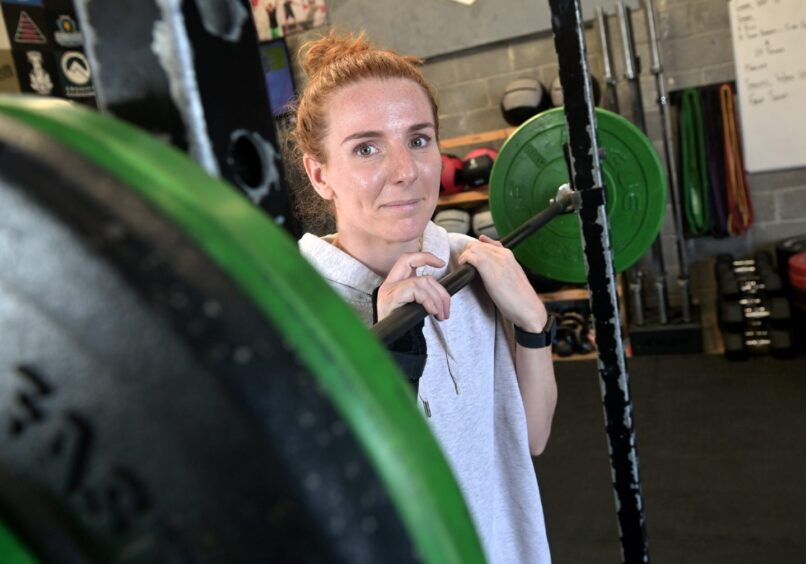
But will she win in Texas? First, she has to get there. Rachel has launched a GoFund Me page to help cover the cost of her flights.
“I would really like to get one of my coaches over with me, just so it’s not me or my own, because that will be pretty daunting and very terrifying,” she says.
As for performance, Rachel is top of the UK rankings in her category, and even making the final global 10 in Texas is an amazing achievement.
“I’ve just got to do as best as I can,” she says.
“If it’s the top of the leaderboard, that’s unreal. But if it’s at the bottom, that is still at the very least 10th in the world. And that’s really, really cool as well.”
To donate to Rachel’s GoFundMe page, click here.
